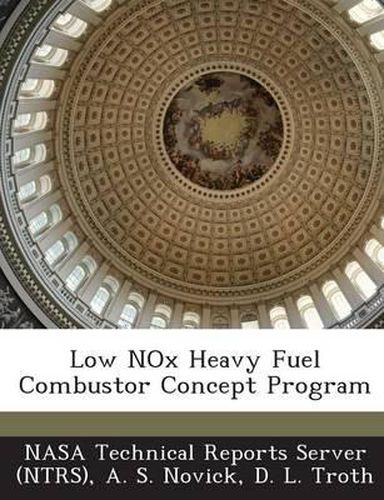Readings Newsletter
Become a Readings Member to make your shopping experience even easier.
Sign in or sign up for free!
You’re not far away from qualifying for FREE standard shipping within Australia
You’ve qualified for FREE standard shipping within Australia
The cart is loading…






The development of the technology required to operate an industrial gas turbine combustion system on minimally processed, heavy petroleum or residual fuels having high levels of fuel-bound nitrogen (FBN) while producing acceptable levels of exhaust emissions is discussed. Three combustor concepts were designed and fabricated. Three fuels were supplied for the combustor test demonstrations: a typical middle distillate fuel, a heavy residual fuel, and a synthetic coal-derived fuel. The primary concept was an air staged, variable-geometry combustor designed to produce low emissions from fuels having high levels of FBN. This combustor used a long residence time, fuel-rich primary combustion zone followed by a quick-quench air mixer to rapidly dilute the fuel rich products for the fuel-lean final burnout of the fuel. This combustor, called the rich quench lean (RQL) combustor, was extensively tested using each fuel over the entire power range of the model 570 K engine. Also, a series of parameteric tests was conducted to determine the combustor’s sensitivity to rich-zone equivalence ratio, lean-zone equivalence ratio, rich-zone residence time, and overall system pressure drop. Minimum nitrogen oxide emissions were measured at 50 to 55 ppmv at maximum continuous power for all three fuels. Smoke was less than a 10 SAE smoke number.
$9.00 standard shipping within Australia
FREE standard shipping within Australia for orders over $100.00
Express & International shipping calculated at checkout
The development of the technology required to operate an industrial gas turbine combustion system on minimally processed, heavy petroleum or residual fuels having high levels of fuel-bound nitrogen (FBN) while producing acceptable levels of exhaust emissions is discussed. Three combustor concepts were designed and fabricated. Three fuels were supplied for the combustor test demonstrations: a typical middle distillate fuel, a heavy residual fuel, and a synthetic coal-derived fuel. The primary concept was an air staged, variable-geometry combustor designed to produce low emissions from fuels having high levels of FBN. This combustor used a long residence time, fuel-rich primary combustion zone followed by a quick-quench air mixer to rapidly dilute the fuel rich products for the fuel-lean final burnout of the fuel. This combustor, called the rich quench lean (RQL) combustor, was extensively tested using each fuel over the entire power range of the model 570 K engine. Also, a series of parameteric tests was conducted to determine the combustor’s sensitivity to rich-zone equivalence ratio, lean-zone equivalence ratio, rich-zone residence time, and overall system pressure drop. Minimum nitrogen oxide emissions were measured at 50 to 55 ppmv at maximum continuous power for all three fuels. Smoke was less than a 10 SAE smoke number.